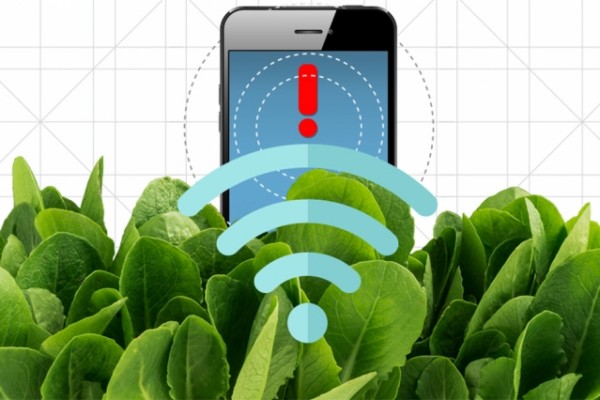By Ana Verayo, | November 01, 2016

By embedding spinach leaves with carbon nanotubes, MIT engineers have transformed spinach plants into sensors that can detect explosives. (Christine Daniloff/MIT)
Scientists have developed a new breed of plants that can apparently detect landmines and other hidden explosives or weapons.
A team from MIT (Massachusetts Institute of Technology) embedded spinach with carbon nanotubes so that these "nanobionic" plants can sniff out potential bombs by transmitting and receiving electrical signals.
Like Us on Facebook
According to MIT chemical engineering professor, Michael Strano, the goal of plant nanobionics is to incorporate nanoparticles for the plant to possess non-native functions.
This works when the nanotubes in the spinach react to nitroaromatics, which are found in landmines that have seeped into surrounding soil as well as other buried explosives. When the plant absorbs the water laced with nitroaromatics, the nanotube reacts and emits a fluorescent light that can be seen via an infrared camera.
This breakthrough technology can allow plants and humans to work together and communicate and to safely monitor the environment using nanobionics.
Strano explains that plants are very good analytical chemists since they possess an extensive root network in the soil. Plants also constantly sample groundwater and possess an efficient system to transport water into their leaves.
Researchers say basic nanobionic methods can be applied to almost any plant species, where the signals can be detected using a smartphone attached to a special camera.
The team devised a way to peek inside the inner workings of plants where these nanotubes help to transmit different kinds of data that can be used to improve and monitor plant health and crop yields.
According to the co-author of the study, MIT's Min Hao Wong, this is almost similar to talking to a plant as the plant gives an idea about its environment. In agricultural applications, this technology can directly affect yield and margins.
This new study was published in the journal, Nature Materials.
-
Use of Coronavirus Pandemic Drones Raises Privacy Concerns: Drones Spread Fear, Local Officials Say

-
Coronavirus Hampers The Delivery Of Lockheed Martin F-35 Stealth Fighters For 2020

-
Instagram Speeds Up Plans to Add Account Memorialization Feature Due to COVID-19 Deaths

-
NASA: Perseverance Plans to Bring 'Mars Rock' to Earth in 2031

-
600 Dead And 3,000 In The Hospital as Iranians Believed Drinking High-Concentrations of Alcohol Can Cure The Coronavirus

-
600 Dead And 3,000 In The Hospital as Iranians Believed Drinking High-Concentrations of Alcohol Can Cure The Coronavirus

-
COVID-19: Doctors, Nurses Use Virtual Reality to Learn New Skills in Treating Coronavirus Patients







